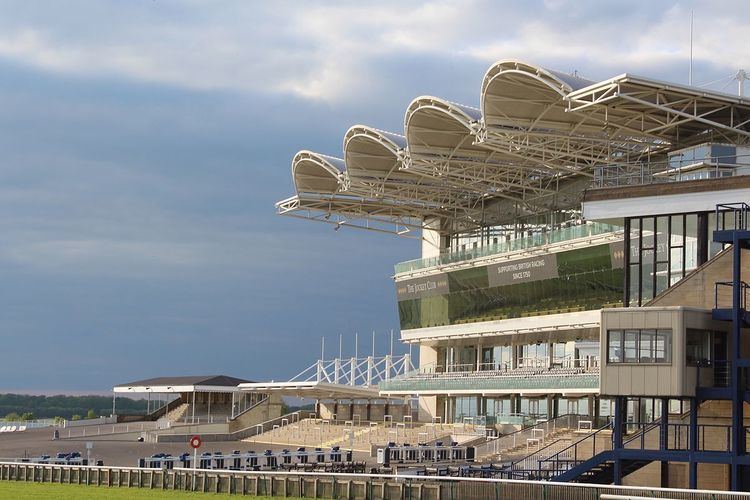Course type Flat Owner Jockey Club Founded 1667 | Screened on Racing UK Phone +44 1638 675500 | |
 | ||
Owned by Jockey Club Racecourses Profiles | ||
In the morning of 1000 guineas on foot to newmarket racecourse
Newmarket Racecourse, which has a capacity of 45,000, is a British Thoroughbred horse racing venue in the town of Newmarket, Suffolk. Newmarket is often referred to as the headquarters of British horseracing and is home to the largest cluster of training yards in the country and many key horse racing organisations, including Tattersalls, the National Horseracing Museum and the National Stud. The racecourse hosts two of the country's five Classic Races - the 1,000 Guineas and 2,000 Guineas, and numerous other Group races. In total, it hosts 9 of British racing's 32 annual Group 1 races.
Contents
- In the morning of 1000 guineas on foot to newmarket racecourse
- The july course newmarket racecourses
- History
- Layout
- Notable races
- Locations
- References
The july course newmarket racecourses
History
Racing in Newmarket was recorded in the time of James I. Charles II was known to attend races on Newmarket Heath with his brother, the future James II. Up until 1744, the two most valuable races run at the course were the King's Plate and the Town Plate. Two more Plate races were added in that year, paid for by local traders, both worth 50 guineas - one was a race for five-year-olds carrying 9 stone, one was an open age race in four mile heats. Another paid for by landowners was a four-year-old race over four miles, each carrying 8 stone 7 lbs. At that time, formal races at Newmarket only took place twice a year - once in April, once in October. A second Spring meeting was added in 1753.
By 1840, there were seven annual meetings:
Layout
Newmarket, in fact, has two courses - the Rowley Mile Course and the July Course. Both are wide, galloping tracks used for Flat racing only.
Technically, there is also a third course, the Round Course, but this is only used once a year for the Newmarket Town Plate, a race of great historical significance, but limited importance in modern day racing.
The Rowley Mile is used for racing in the Spring and Autumn, while the July Course is used in Summer. The Rowley Mile has a grass strip used by light aircraft, and formerly by the Royal Air Force (RAF) as RAF Newmarket.
The Devil's Dyke runs past the edge of the July course. About half of the racecourse complex, including the July and Cesarewitch/Beacon courses, is actually in the neighbouring county of Cambridgeshire.
Historically, there are various names that have been given to courses or parts of courses at Newmarket, and some are still in use today to describe particular race distances. Whyte's History of the British Turf (1840), for instance, lists the Beacon Course, Round Course, Audley End Course, Clermont Course, Ancaster Mile, Rowley Mile, Abingdon Mile, Banbury Mile, Ditch Mile and Yearling Course.
Notable races
The King's Plate (or Queen's Plate) was a major race run between 1634 and 1765.
Locations
52°13′51.1″N 0°22′56.1″E (Location of Carpark)
52°14′15″N 0°22′28″E (Rowley Mile)
52°13′47.5″N 0°21′43.5″E (July Course)
